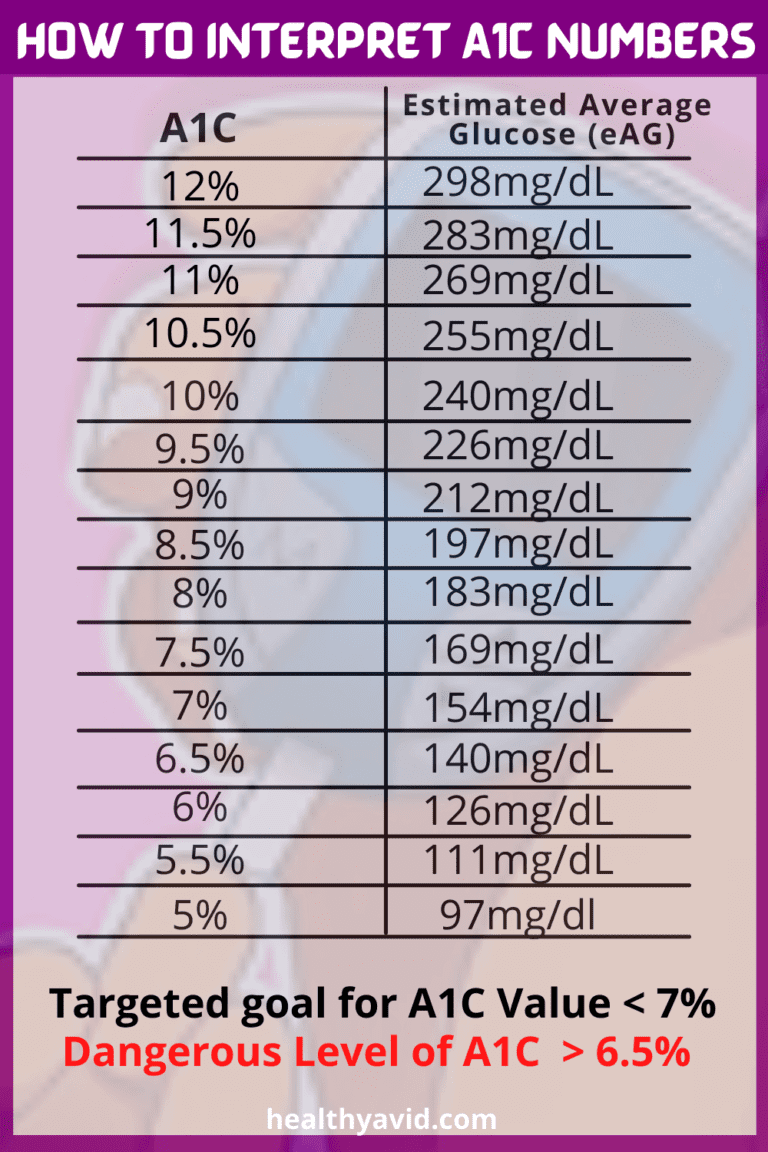
As such, it is recommended to maintain a healthy diet and control the risk factors of diabetes to prevent complications and other conditions. People who have diabetes or other conditions that increase their blood glucose levels have more glycohemoglobin (sugar bound to hemoglobin) than normal. To diagnose diabetes with an A1C test, physicians use the following scale: Normal: below 5 percent Prediabetes: 5.7 to 6.4 percent Diabetes: 6. Some individuals may try to change their diet a few days prior to a check-up, however this will not influence or change the hemoglobin A1C level. The A1C test measures how much glucose is attached to the hemoglobin in your blood.

You are able to control your hemoglobin A1C levels without going on a strict diet. Monitoring Diabetes Management For individuals already diagnosed with diabetes, the HbA1c test used for monitoring their blood sugar control over time. A1C Level What It Means A1C < 5.7: Normal (minimal Risk for Type 2 Diabetes) Your average blood glucose level for the last 2-3 months is in the same range as someone who doesn’t have diabetes. If you are able to maintain such levels continuously, your doctor may reduce the number of hemoglobin A1C tests to 2 per year. This is to evaluate how well your diabetes is under control, ideally one will have a hemoglobin A1C reading of less than 7%. How often should you get a Hemoglobin A1C test?ĭiabetics are recommended to have a hemoglobin A1C test every 2-3 months. This is why a hemoglobin A1C test provides a better determinant of the patient’s diabetic condition, as it takes into account sugar consumption in the past 2-3 months, in contrast to a few days prior to a normal blood test. The blood sugar level indicates the amount of sugar in the food consumed in the past 1-2 days many individuals may avoid sugary foods or sweets 2-3 days prior to the test in order to appease their doctor with a positive result (80-130 milligram/deciliter).

Why is Hemoglobin A1C used to measure diabetes?ĭiabetics may be familiar with fasting 6-8 hours prior to receiving a blood’s test at a scheduled doctor’s appointment. It means that if we over consume foods with sugar our body will be unable to use that amount, so the surplus will be stored in the blood resulting in a gradual increase in hemoglobin A1C levels. Poor control of diabetes is a risk factor for. Hemoglobin A1c indicates the average level of blood sugar (glucose) that has accumulated over the past 2-3 months. Among diabetic patients, a Hemoglobin A1c (HbA1c) level greater than 9.0 indicates poor control of diabetes.


 0 kommentar(er)
0 kommentar(er)
